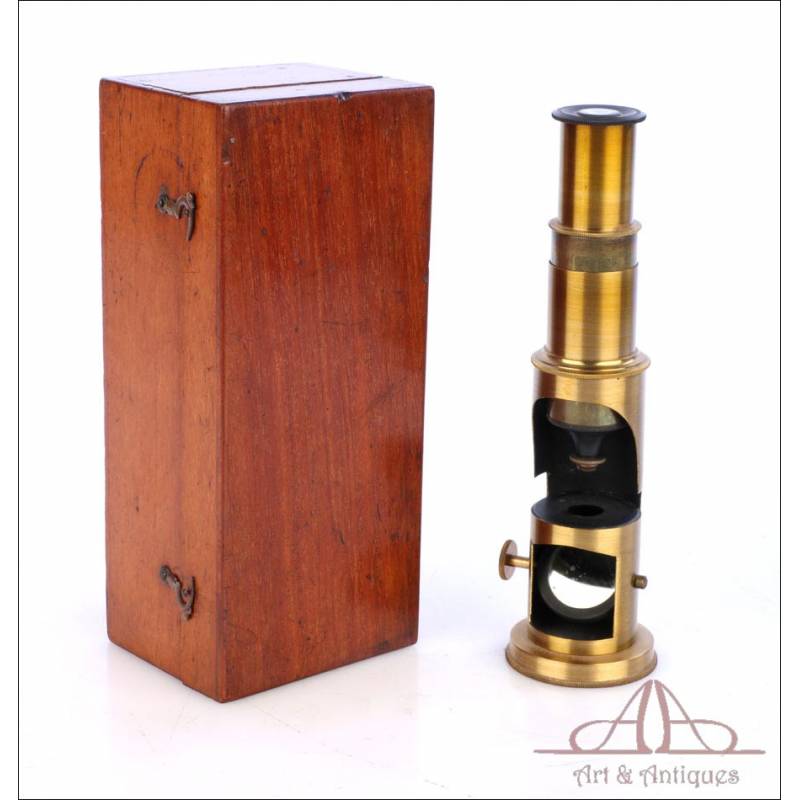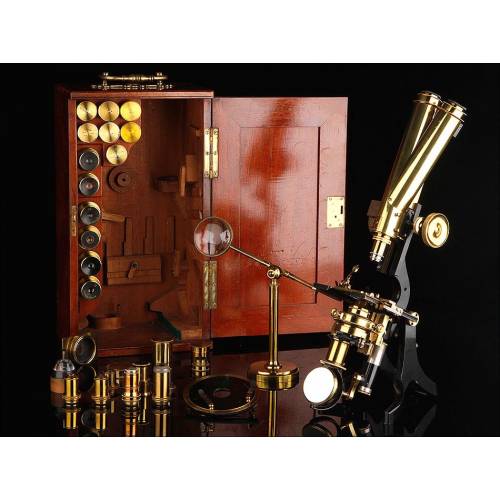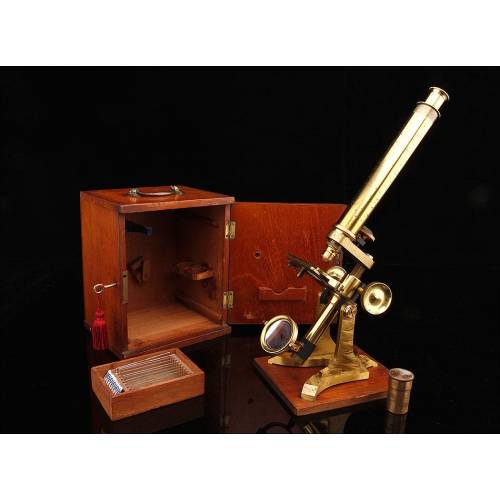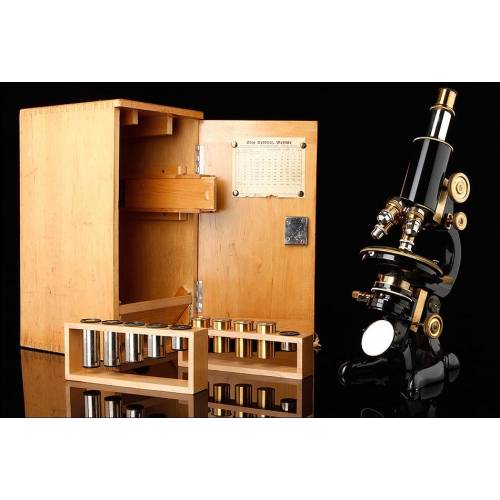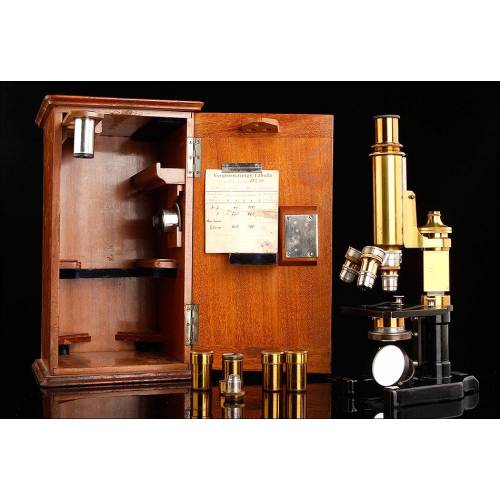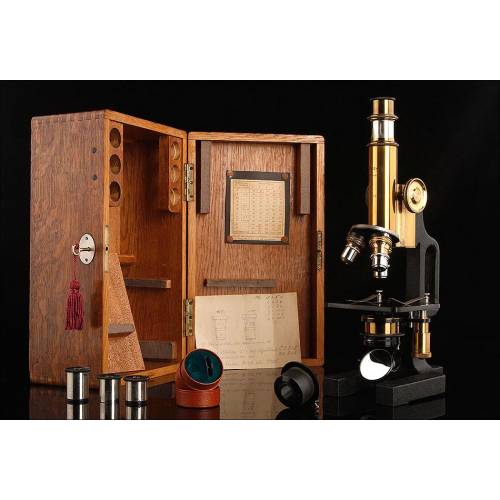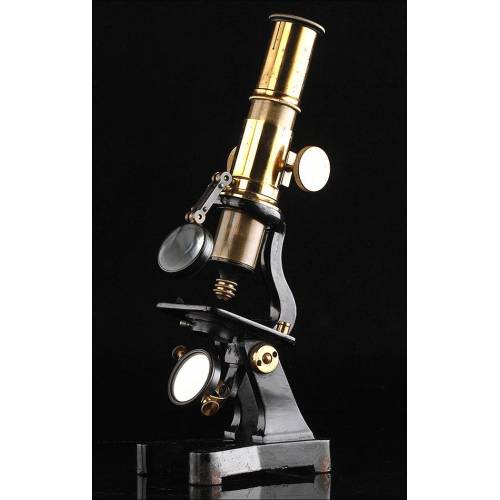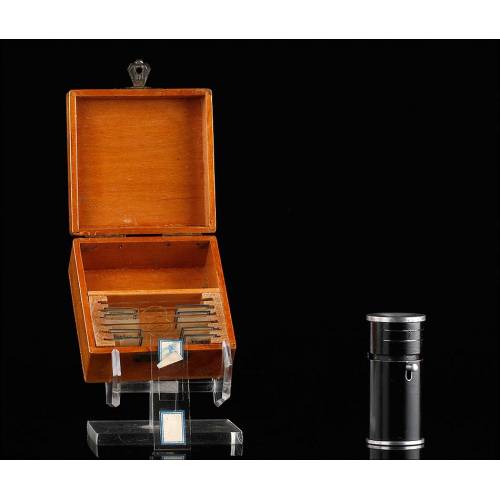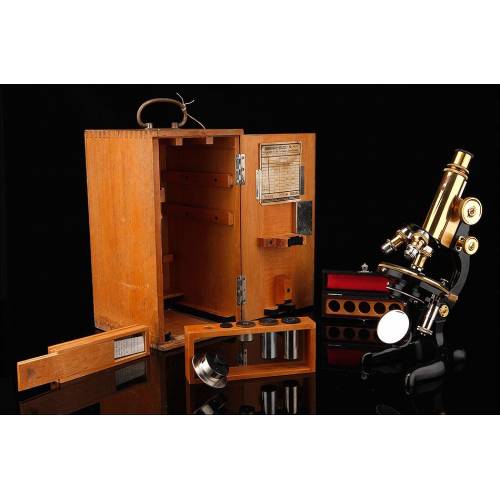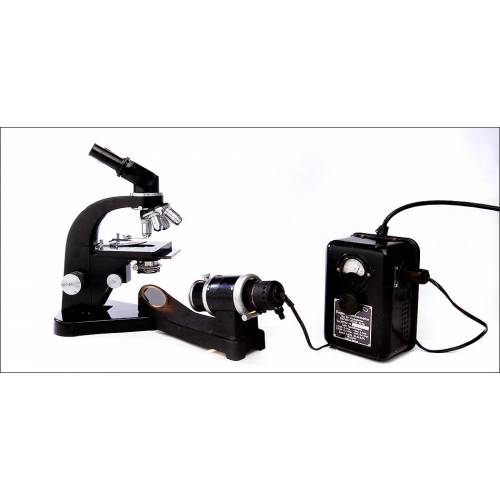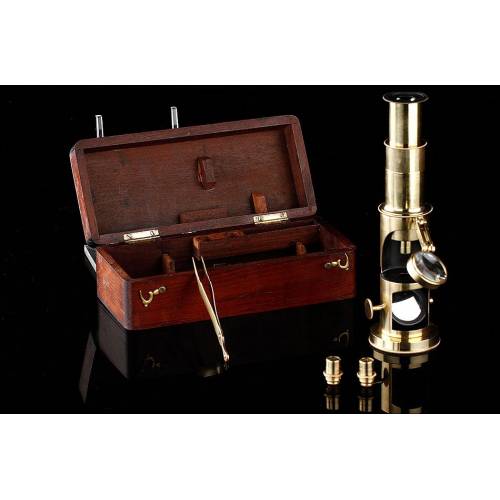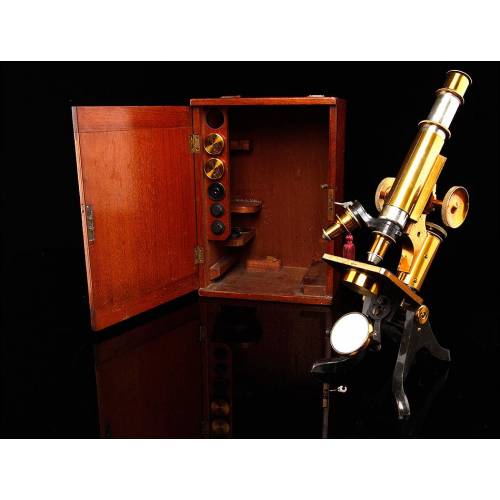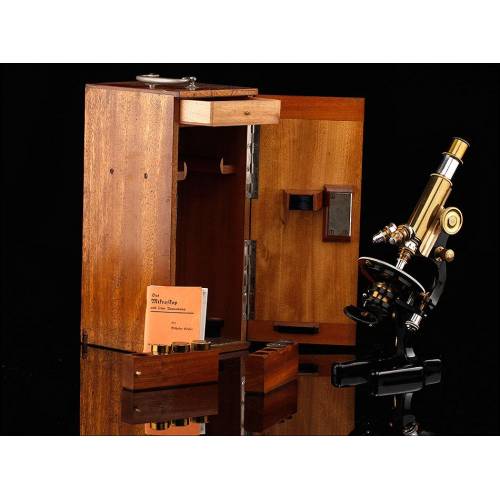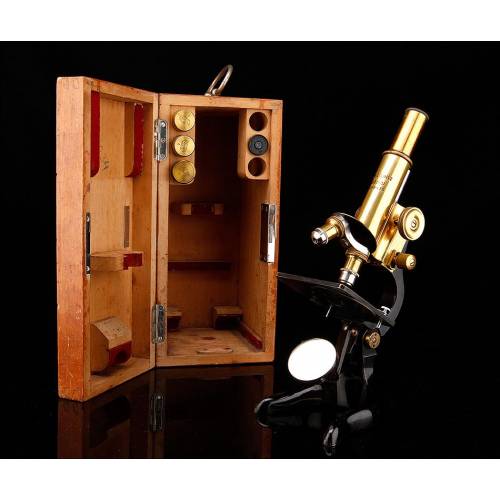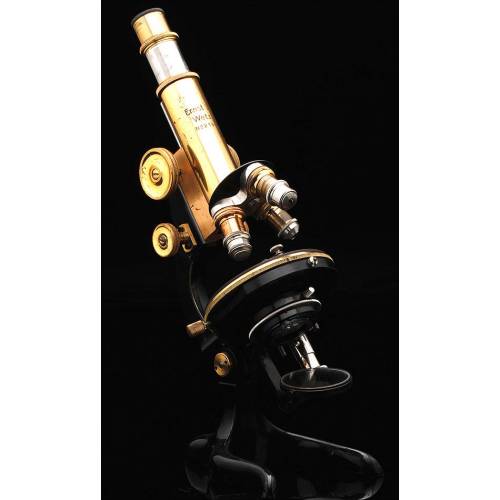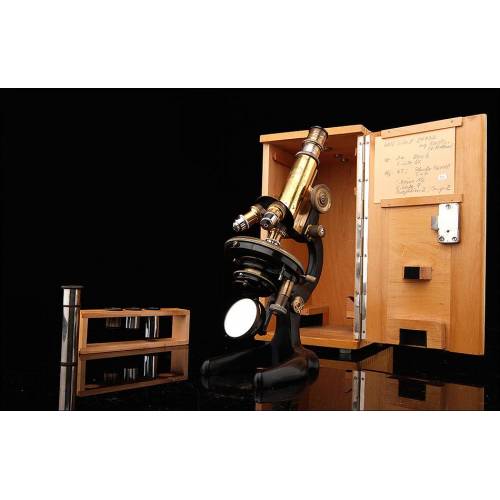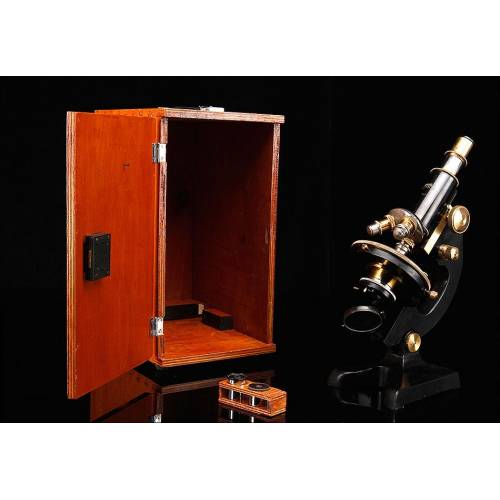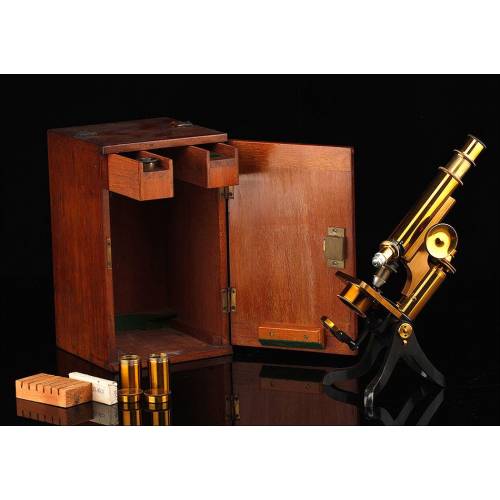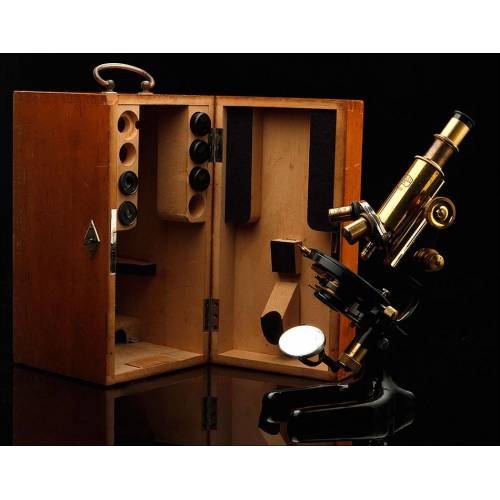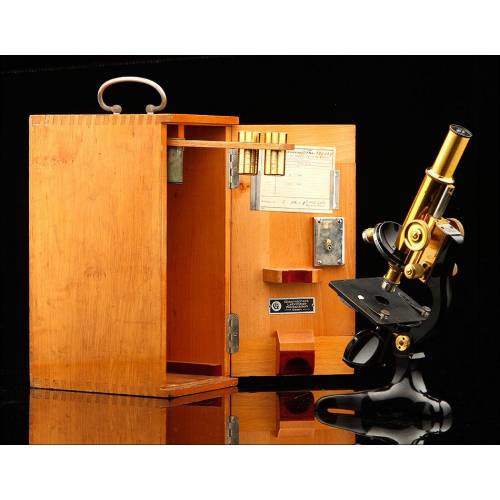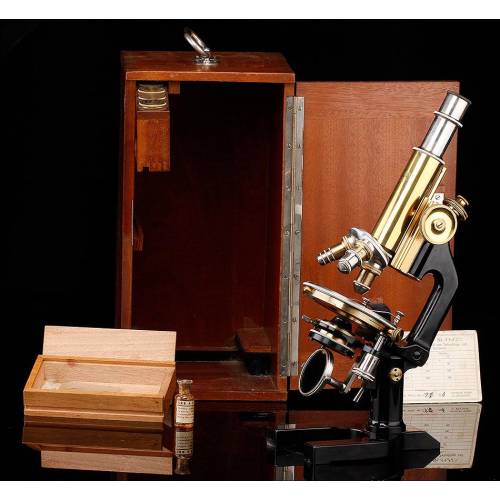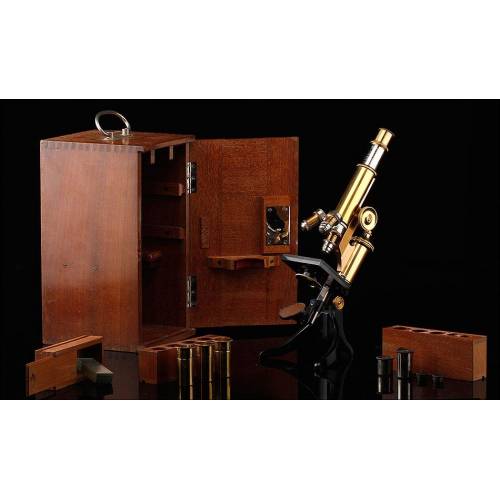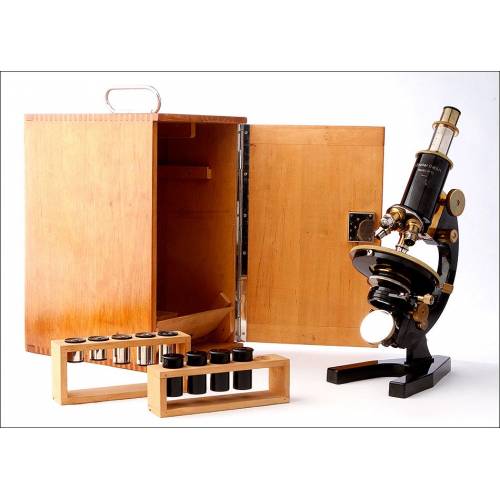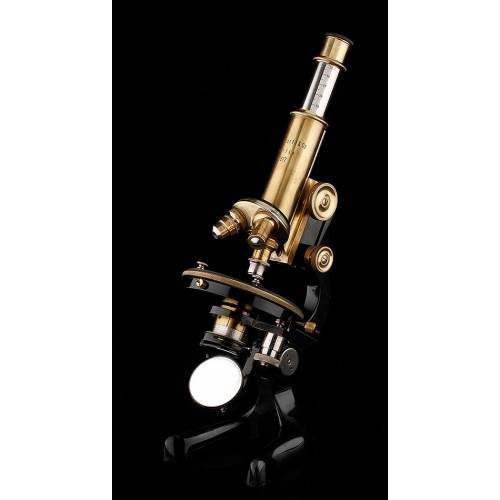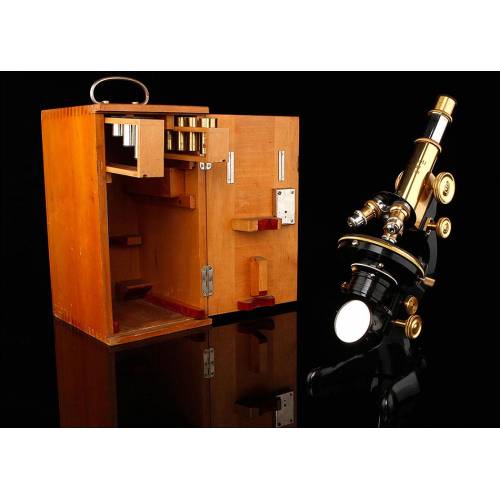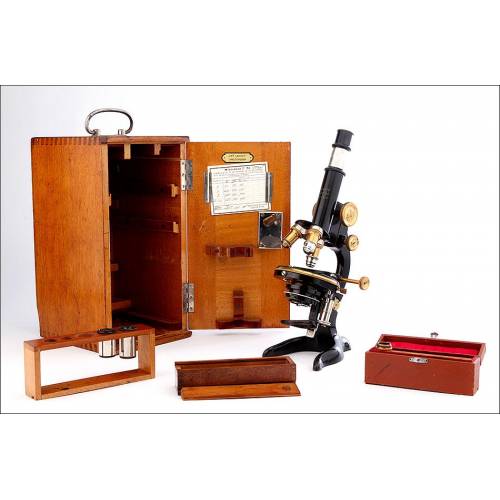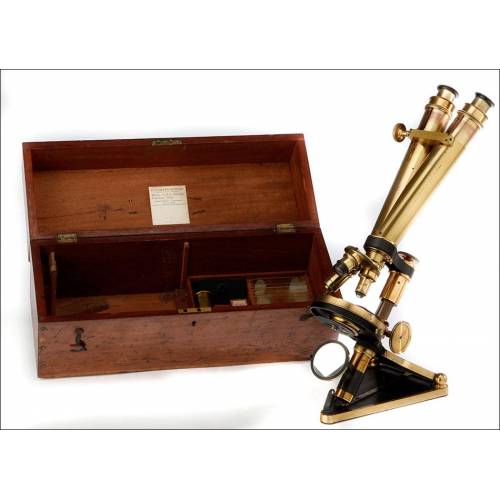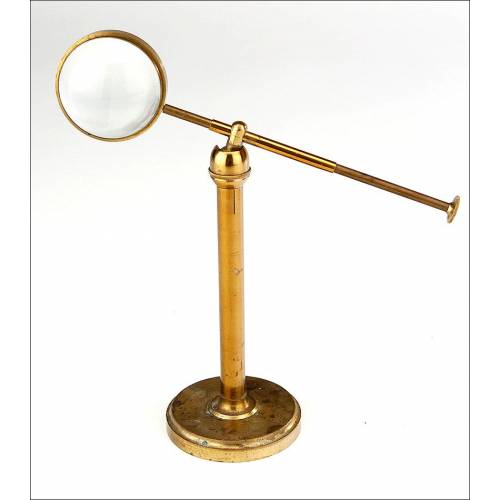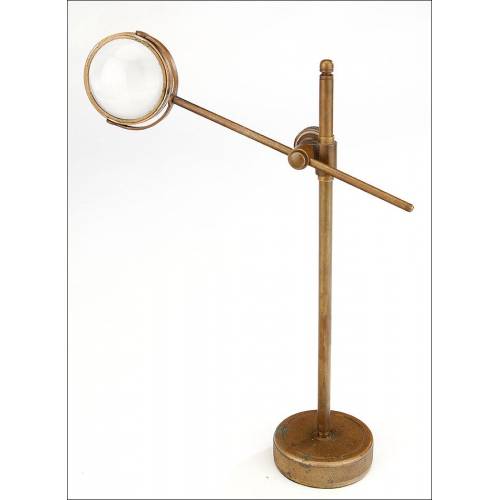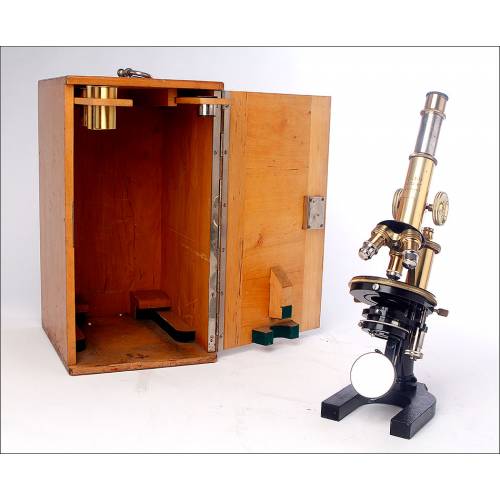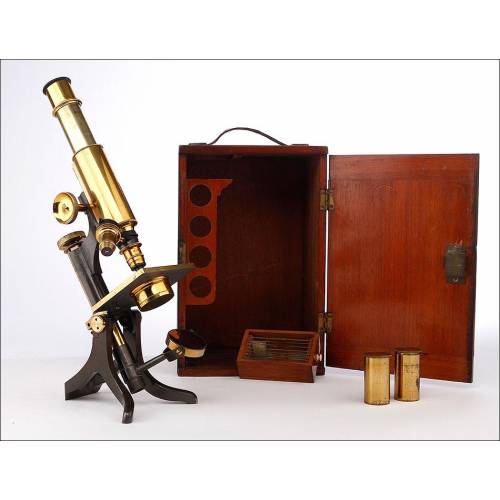D-508
Antique Small French Drum Microscope. Circa 1890
Fascinating small-sized drum microscope. Well preserved and in working order. Mahogany case.
Sold!
Small French drum microscope made circa 1890, in very good condition and fine working order. This antique and delicate device is composed of a brass cylinder which slides inside a tube made of the same metal, both in good condition. It includes an eyepiece, a lens and a light-capturing mirror. All the component parts are finely preserved; the brass keeps the original finish which provides the metal with a great-looking and characteristic patina. The microscope comes in its original solid-mahogany case, in good condition and with old-time hinges, metal hooks and foam fasteners. The outer finish is original too and looks really good. This small French drum microscope is a very special piece, worthy to belong to a good collection of antique scientific instruments. Dimensions: 1.7 in / 4.3 cm. Height: 6.3 in / 16 cm.Drum Microscopes History Drum microscopes are an evolution of pocket or travel microscopes. They were invented by the English mathematician and optic material manufacturer Benjamin Martin who made the first model in 1738. This instrument was made of wood, brass and cardboard. A drum microscope is composed of a cylinder which slides inside a pipe in order to focus the specimen or sample through the instruments lens. The specimen receives the light reflected by the oscillating mirror located at the bottom of the microscope. For their easy operation and small size, drum microscopes became quite popular and were produced for around two centuries with scarcely any modifications of the original design. Cheap and affordable, they were highly appreciated by students.

